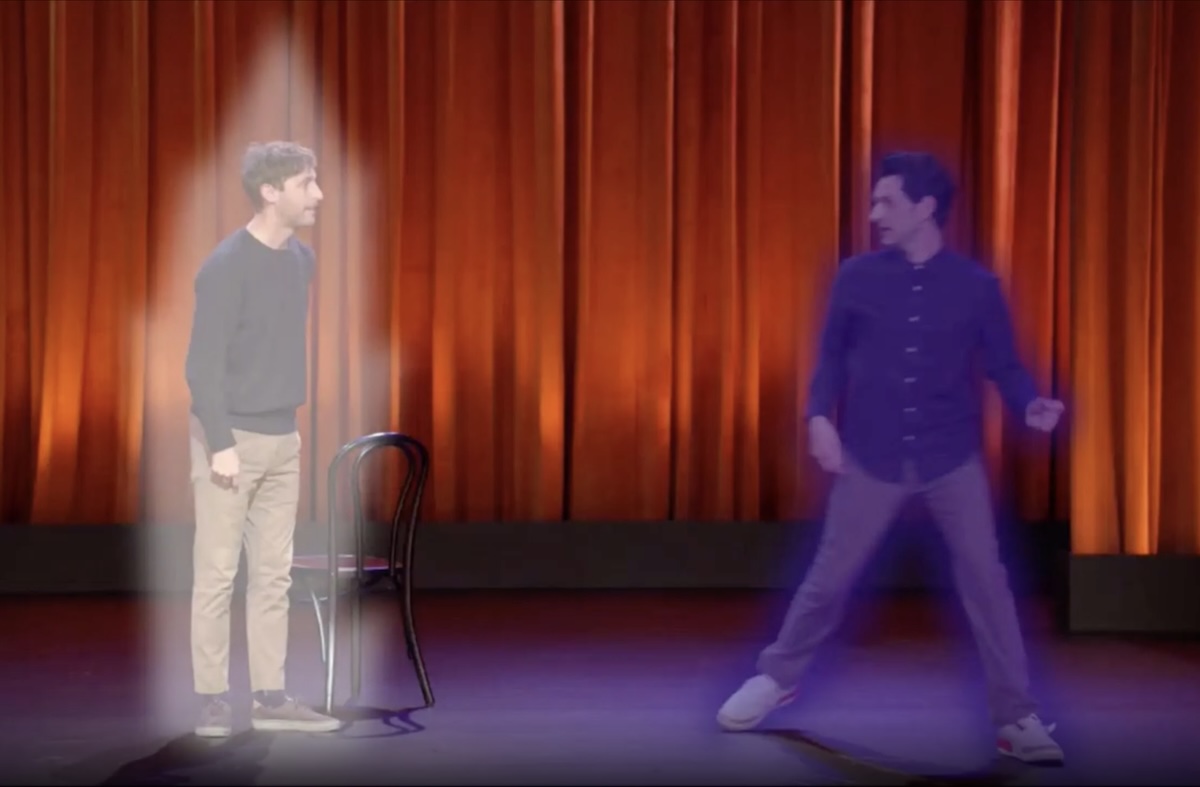
In Hunter X Hunter, “Nen” is “life energy”. It is emitted by all living things, but only trained experts can harness its power. Characters use Nen to punch harder, jump higher, shoot magic missiles, move objects without touching them, and write haikus that set people on fire. In a fight, Nen is a finite resource. The more you can generate, the stronger you are, and if you run out, you’re screwed.
In improv, “Yen” is attention. It is emitted by all living things, but only trained improvisers can harness its power. Improvisers use Yen to become different people, create objects from nothing, communicate seemingly telepathically, and get big laughs. In a show, Yen is a finite resource. The more you can generate, by listening closely and keeping ideas in the air, the funnier and more interesting your shows can be. But if you run out, you’re screwed.
The first time I saw an improv show was when, in elementary school, the whole grade was gathered in the library to see some special guests, two members of an improv troupe called “Laughing Matters”. I remember laughing the whole time, I remember a word-at-a-time story about “Bob the one-eyed fish,” and I remember leaving wondering, how the hell did they do that? It was absolute magic. And then, of course, I found “Whose Line Is It Anyway?”.
In college, I joined Georgia Tech’s resident improve troupe “Let’s Try This!” and started to uncover improv’s secrets, only to be confronted with indecipherable magic again and again at theaters like Dad’s Garage, in shows like “Improvised Shakespeare” in Chicago, on YouTube recordings of old UCB cagematches, and in an embarrassing number of podcasts.
When most people encounter improv, they think, “That’s so funny! I could never do that.” But there’s a few people in every audience who think, “That’s so funny. I have to know how they did that.”
Yen is a theory of improv that honors the feeling of magic that improv holds upon first discovery.
Part of the fun of this approach is picturing improv scenes like they’re an anime battle.

Picture raw Yen as a glob of golden light. If you’ve ever done a “pass the ball”-type improv warmup, Yen is what the ball is made of. When you play a rich fancy man, your Yen flows from you to form a cane in your hand, and a top hat on your head.
Yen is attention. The rest is commentary.
Just like “the economy” or the “concept of justice”, that improv table you just set your improv coffee on only exists so long as we keep pretending it does. The moment we stop insisting it exists, the housing market– I mean the table– collapses.
In reality, this is because of like, epistemology or something. But in the world we’re entering, it’s because that coffee, that table, and the value of subprime mortgage loans, are all made of Yen. Yen aura. The magical energy of attention made real.
All living things produce Yen. When you pay attention to something, you’re lending your Yen aura to it, and when you create something new, that thing is made, in part, of your Yen.
Yen attracts attention. Living things are naturally sensitive to it. That’s why, if you stop in the middle of the hallway and look at a spot on the ceiling, other people will stop and look there to. You’re projecting your Yen at the ceiling, which draws others to do the same, until everyone moves on and that spot of Yen dissipates.
Some things can hold on to Yen. It doesn’t always dissipate. The maximum Yen capacity of a random spot on the ceiling is very low, so any Yen stored there will be lost almost immediately. But a book, a movie, a painting, can store Yen for decades or longer. Also, critically and unsurprisingly, people store huge amounts of Yen. Their own Yen, and Yen given to them by others.
Celebrities are often people with one-in-a-million Yen capacity. No matter how much Yen studios pour into Hugh Jackman, his aura remains stable.
Finally, Yen is consumed. Spent, to affect change. In a debate, Yen is spent to convince. The goal is to spend Yen as efficiently as possible change minds. In chess, Yen is spent on finding the better move. And in improv, Yen is spent on laughs!
More accurately:
In Improv, Yen is spent to evoke an emotional response from the audience.
Your job, as an improviser, is to:
There’s also a fourth basic technique, eight advanced techniques, and six specializations! But that would be getting ahead of ourselves.
I hope you’re as excited as I am.
test change test